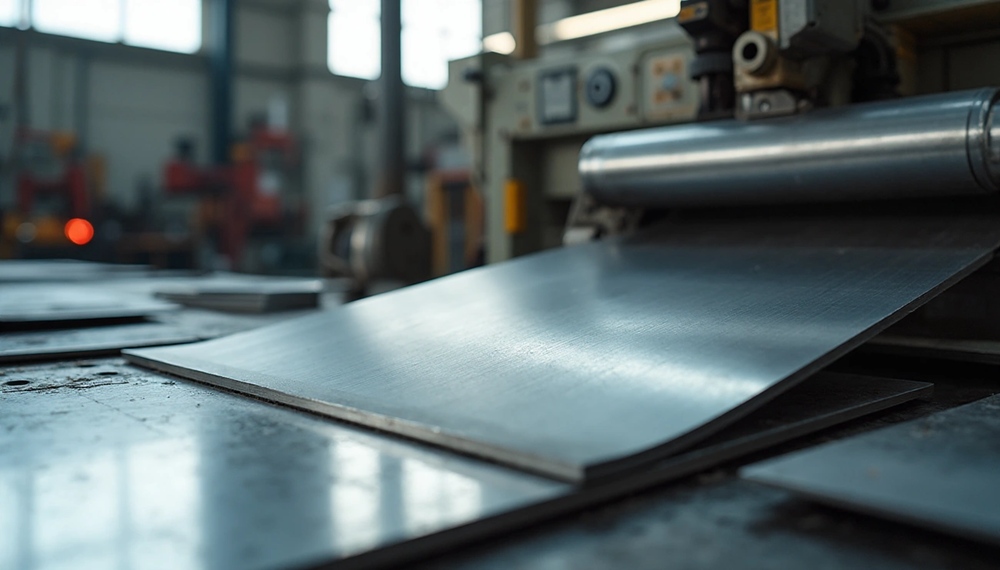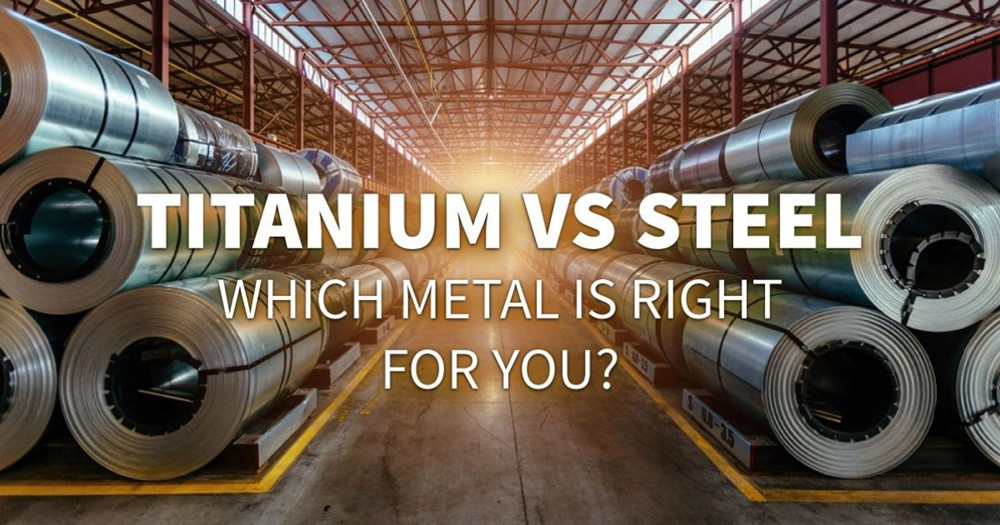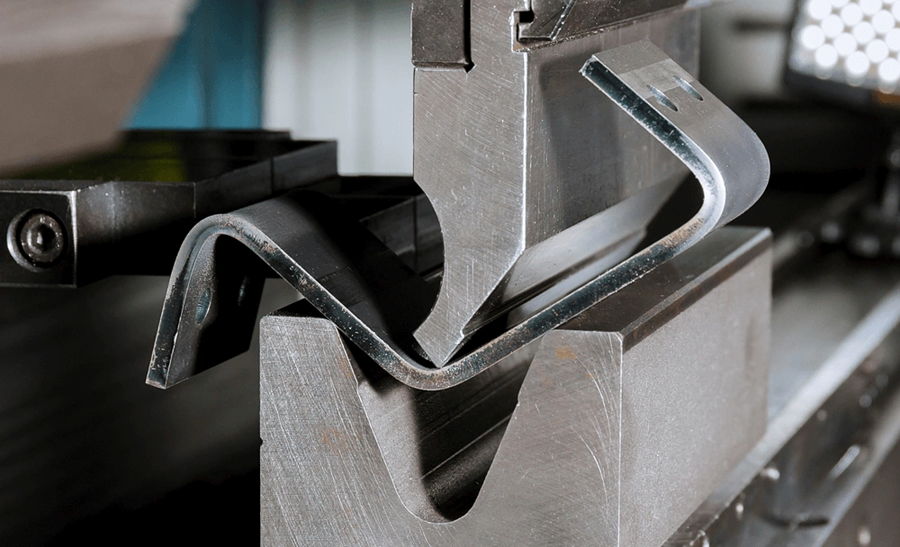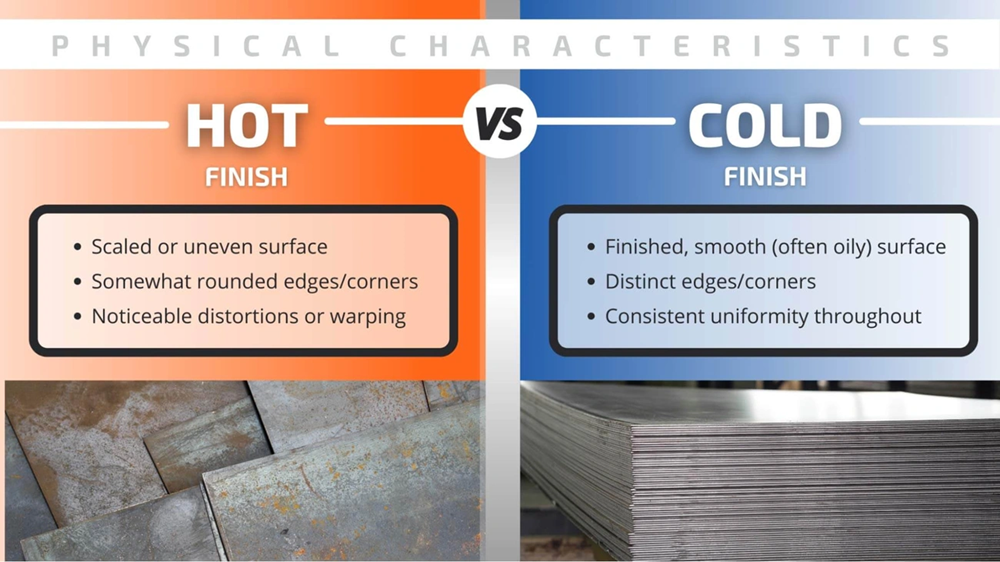
Titanium sheet metal shows amazing versatility from DIY lightweight projects to architectural masterpieces. A basic windscreen crafted from 0.005″ titanium sheet weighs only 14.6 grams and shields portable stoves effectively. Titanium ranks as the second most accessible light metal in aircraft production after aluminum. Its uses reach way beyond the reach and influence of aerospace alone.
Titanium sheet metal grades stand out with properties that make them a unique match for steel options. CP Ti Grade 2 boasts a minimum yield strength of 275 MPa, which gives titanium alloy sheet outstanding durability at minimal weight. Titanium’s thermal expansion coefficients are about half of stainless steel and just one-third of aluminum. This substantially cuts down thermal stresses under demanding conditions. The price of titanium sheet metal makes sense to think over, as architects use it more in buildings that just need higher durability. Museums, theaters, temples, and structures near corrosive coastal areas benefit from these properties. This complete comparison will get into how titanium and steel perform in ground applications of all types.
Titanium Sheet Metal Grades vs Steel Types: What You Need to Know

Understanding how titanium and steel sheet metal perform differently means we need to look at their specific grades and compositions. Material selection depends on finding the right balance between strength, weight, corrosion resistance, and how easily you can shape it.
CP Titanium Grade 2 vs Ti6Al4V (Grade 5)
Commercially pure (CP) Grade 2 titanium has at least 99.2% titanium with tiny amounts of oxygen (≤0.25%) and iron (≤0.30%). People often call it the “workhorse” of titanium grades because it combines decent strength (345-550 MPa tensile strength) with excellent corrosion resistance. Grade 5 titanium (Ti6Al4V) is different – it’s an alpha-beta alloy with 90% titanium, 6% aluminum, and 4% vanadium. These additions make it much stronger, with tensile strength reaching 895-930 MPa – almost three times stronger than Grade 2.
Grade 5 might be stronger, but Grade 2 is much easier to work with. It stretches 20-30% before breaking, while Grade 5 only manages 10-15%. This makes Grade 2 titanium sheets perfect for complex shaping operations. Grade 2 is also easier to weld and costs much less – usually $20-40 per kg compared to Grade 5’s $80-150 per kg.
Mild Steel vs Stainless Steel in Sheet Form
Mild steel and stainless steel are quite different in what they’re made of. Mild steel contains 0.05-0.25% carbon with very few other elements. You can shape and weld it easily, but it rusts when iron oxidizes.
Stainless steel needs at least 10.5% chromium. This creates a protective chromium oxide layer that stops corrosion. This protection makes it ideal for wet or chemical environments. The chromium makes stainless steel harder but more brittle than mild steel.
Stainless steel always costs more than mild steel, but you might save money in the long run because it needs less maintenance.
Formability and Bending Radius by Grade
The room temperature ductility of titanium sheet metal grades doesn’t stretch as much as other structural metals. This means you need wider bend radii when shaping it. Titanium’s elastic modulus is about half of steel’s, which causes it to spring back a lot after shaping.
Looking at titanium grades, annealed Grade 1, Grade 11, and Grade 17 are the easiest to shape. The others follow in this order: grades 2, 7, 16, 3, 12, 4, and 5. Grade 5 titanium becomes much easier to work with at higher temperatures. At 1200°F (649°C), it barely springs back and you can make much tighter bends.
You need good lubrication when shaping titanium sheet metal because it tends to stick more than stainless steel.
Thermal and Electrical Performance in Harsh Conditions
Materials must perform well under extreme conditions to work in advanced applications. A full picture of thermal and electrical characteristics shows that titanium sheet metal and steel alternatives have big differences.
Thermal Expansion Coefficient: Titanium vs Steel
Titanium sheet metal’s thermal stability gives it a crucial edge in changing temperatures. Titanium’s linear thermal expansion coefficient sits at about 8.6 × 10⁻⁶ per °C. Stainless steel ranges from 11-18 × 10⁻⁶ per °C. This is a big deal as it means that titanium expands 40-50% less than steel and stays more stable as temperatures change.
Titanium’s thermal endurance goes beyond just expansion rates. Its melting point reaches 1660-1670°C, beating steel’s 1450°C. The metal’s thermal conductivity measures 6.72 W/(m·K), nowhere near steel’s 20 W/(m·K). This makes titanium less affected by temperature changes.
Heat Shielding and Reflectivity in Titanium Sheets
Titanium sheet metal stands out in heat management. Performance data shows titanium heat barriers can handle radiant heat up to 1090°C (2000°F). They also withstand direct contact temperatures of 650°C (1200°F). These features make titanium sheets perfect to protect engine bays, transmission tunnels, and areas that need thermal isolation.
Titanium heat shields often mix with woven volcanic rock fibers. These fibers resist flames well and conduct very little heat. This combination makes the shields even more protective.
Electrical Conductivity and Oxide Layer Resistance
Titanium’s naturally forming oxide layer affects its electrical applications. Titanium dioxide (TiO₂) creates a 5-25 nm thick protective barrier on titanium surfaces. This layer guards against corrosion and acts like a semiconductor with high electrical resistance.
The oxide layer’s thickness changes how well it conducts electricity. Thinner layers under 5 nm might conduct better, while layers over 150 nm can reduce conductivity by a lot. Titanium conducts electricity at 2.4 × 10⁻⁶ S/m, compared to stainless steel’s 1.4 × 10⁻⁶ S/m.
Surface treatments and microalloying techniques help change titanium’s electrical properties. This matters most in fuel cells, where interfacial contact resistance needs to stay under 10 mΩ cm².
Forming and Shaping: Real Performance in DIY and Industrial Settings

Titanium sheet metal fabrication needs special techniques that are quite different from standard metal work. You need to understand titanium’s unique properties to shape it the right way.
Annealing Titanium Sheet for Reduced Springback
Titanium bounces back after forming because its elasticity is about half of stainless steel’s. Research shows that stress-relief annealing at temperatures between 482°C and 649°C for 30-60 minutes helps minimize this effect. This temperature range lets internal stresses fade away without changing the metal’s properties. Recent studies of incremental sheet forming show that heat treatment at 400°C for 30 minutes after forming cuts springback by 70% in high-strength alloys.
Pneumatic vs Hydraulic Pressing for Thin Sheets
The choice of pressing system affects your results with thin titanium sheets:
- Pneumatic presses work faster and cost less, but only deliver moderate pressure that works for light forming.
- Hydraulic presses give you better precision and even force distribution, making them the best choice for complex titanium work despite slower speeds.
These factors make hydraulic systems a better fit for titanium work, especially when you’re forming Grade 5 alloys that need stronger clamping forces.
CNC Machining Challenges with Titanium Alloys
Titanium’s low thermal conductivity means heat builds up during machining. You must control temperature carefully because heat moves slowly through the material and wears tools faster. Tests prove that pointing high-pressure coolant at the cutting zone while using lower cutting speeds and higher feed rates helps reduce heat buildup. Using CAD/CAM software to plan precise toolpaths before machining prevents too much deflection.
Surface Cracking During Deep Draw Forming
Surface defects are the biggest problem in deep drawing titanium. The metal doesn’t form well at room temperature, and cracks show up mostly inthe neck and upper wall areas. Raising the forming temperature to 200°C lets you draw 33% deeper before the metal fails, based on cup-drawing test results. Looking at failure zones through scanning electron microscopy shows shallow dimples that point to ductile tensile failure. The right temperature is vital to prevent surface cracks.
Use Case Comparison: Aerospace, Architecture, and DIY Applications

Ground applications show how titanium and steel sheet metals perform differently in industries of all sizes.
Titanium in Aerospace: Weight Savings and Strength
Titanium sheet metal brings major benefits to aerospace applications. The Boeing 787 Dreamliner uses about 15% titanium by weight. This saves around 3 million pounds of fuel each year per aircraft. These savings come from titanium’s weight – it’s 40-45% lighter than steel but just as strong. Titanium’s excellent strength-to-weight ratio helps engineers build lighter aircraft that burn less fuel, create fewer emissions, and carry more cargo.
Key aerospace applications include:
- Structural components in fuselage frames and wing structures
- Engine components, including fan blades and compressor disks
- Landing gear struts and hydraulic systems
- Fasteners and connectors in critical areas
Steel in Construction: Affordable Durability
Steel continues to be construction’s foundation worldwide because it costs nowhere near as much as titanium. Steel needs less processing and is easier to produce. Steel construction delivers excellent structural integrity during extreme weather like tornadoes and hurricanes. Its modular nature also makes future expansions possible without huge extra costs.
DIY Stove and Windscreen Projects with Titanium Foil
Titanium foil (0.005″ thickness) works great for ultralight applications. A 7-gram pot stand can hold about 4000 grams. Titanium windscreens offer strength, lighter weight, and resist high temperatures well. Tests have shown that proper ventilation matters – windscreens with too few air holes (14 versus 44) can limit oxygen to alcohol stoves.
Architectural Cladding: Titanium’s Esthetic Edge
Titanium’s muted silver color and unique surface properties engage today’s designers. Unlike other metals, titanium can be anodically oxidized to create various colors and reflections that shift with viewing angle, curvature, time of day, and weather. Bilbao’s Guggenheim Museum uses 0.3mm titanium plates (60 tons total). This shows how titanium creates eye-catching visual effects through irregular hyperboloid shapes.
Conclusion
Titanium sheet metal outperforms steel in many ways. The best choice between these materials comes down to what you just need them to do. Titanium costs more than steel, but its strength-to-weight ratio makes it perfect for aerospace use. This ratio helps save fuel and lets aircraft carry bigger loads.
Titanium’s natural resistance to corrosion means you don’t just need protective coatings like steel does. This can help balance out the higher upfront costs by cutting down on maintenance. The metal also handles temperature changes better than stainless steel, with a thermal expansion rate that’s only half as much.
Steel remains the top choice for construction and industrial projects. It’s budget-friendly, easy to find, and manufacturers know exactly how to work with it. Regular mild steel shapes easily for basic uses, while stainless steel works great when you just need better corrosion protection.
Working with titanium takes special care and knowledge. You just need the right annealing process, temperature control, and equipment to get good results. These factors play a big role in choosing the right material for your project.
Architects have started using titanium more often these days. The metal’s unique look and lasting durability make it a great choice for landmark buildings, even with its higher price tag.
Engineers and designers must balance performance against their budget when picking between titanium and steel sheet metal. The right choice depends on what the project needs, how it will be made, how long it should last, and what resources are available. It’s not just about comparing basic properties anymore.
Key Takeaways
Understanding the real-world performance differences between titanium and steel sheet metal helps engineers and designers make informed material choices based on specific application requirements and budget constraints.
• Titanium offers 40-45% weight savings over steel while maintaining comparable strength, making it ideal for aerospace applications where fuel efficiency matters most.
• Steel remains cost-effective for construction projects, typically costing significantly less than titanium while providing excellent structural integrity and easier fabrication processes.
• Titanium’s thermal expansion coefficient is approximately half that of stainless steel, providing superior dimensional stability in temperature-fluctuating environments.
• Forming titanium requires specialized techniques, including stress-relief annealing at 482-649°C and hydraulic pressing systems to minimize springback and surface cracking.
• Grade 2 titanium excels in formability with 20-30% elongation, while Grade 5 offers triple the tensile strength at 895-930 MPa for high-performance applications.
The optimal material choice emerges from balancing performance requirements, fabrication capabilities, lifecycle costs, and esthetic considerations rather than focusing solely on individual properties. Both materials serve distinct purposes across aerospace, construction, and specialized applications.
FAQs
Q1. How does the strength of titanium compare to steel? Titanium generally has a higher tensile strength than steel. For example, Grade 5 titanium (Ti6Al4V) has a tensile strength of 895-930 MPa, which is significantly higher than many steel alloys. However, the specific strength comparison depends on the exact grades being compared.
Q2. What are the main drawbacks of using titanium sheet metal? The primary disadvantages of titanium include its higher cost compared to steel, more complex fabrication processes, and greater reactivity during production. Titanium also requires specialized forming techniques and equipment, which can increase manufacturing complexity and costs.
Q3. In what applications is titanium sheet metal preferred over steel? Titanium is often preferred in aerospace applications due to its exceptional strength-to-weight ratio, allowing for significant weight savings and improved fuel efficiency. It’s also favored in corrosive environments, high-temperature applications, and for certain architectural projects where its unique esthetic properties are desired.
Q4. How does titanium perform in extreme temperatures compared to steel? Titanium exhibits superior thermal stability compared to steel. It has a lower thermal expansion coefficient (about half that of stainless steel) and a higher melting point (1660-1670°C vs 1450°C for steel). This makes titanium more dimensionally stable and resistant to thermal stresses in extreme temperature environments.
Q5. Can titanium sheet metal be easily formed and shaped? Forming titanium sheet metal is more challenging than steel due to its higher springback and tendency to work harden. It requires specialized techniques such as stress-relief annealing, elevated forming temperatures, and proper lubrication. However, with the right processes and equipment, titanium can be successfully formed into complex shapes for various applications.

